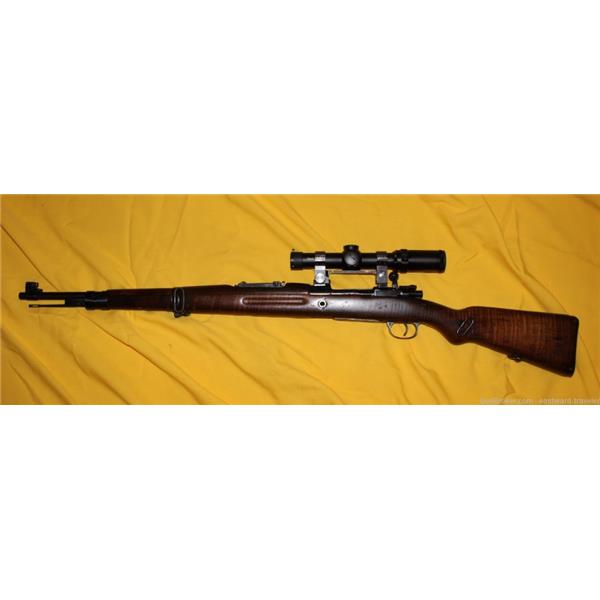

Most often, the facility which did the work was either Zavod or Pred 44 (written in Cyrillic). The M24/52 was also patterned similarly to the M24/47, but obviously based on the slightly longer standard M98 action.īoth M24/47 and M24/52 rifles are generally encountered with their original markings sanitized and new markings applied at the time of refurbishment.
#Refinished 8mm yugo mauser series
Virtually all M1924 pattern rifles in Yugoslavian inventory during the late 1940’s were converted to the M24/47 standard which apart from a straight bolt handle, was functionally identical to the later M48 series rifle. The chief difference being that the M24/52 was based on refurbishment of standard length actions, primarily older VZ24’s, while the M24/47 program was based on refurbishment of the intermediate length Yugoslavian M1924 actions available to the Yugoslavian government in the post-war timeframe (usually originally manufactured either domestically or by Fabrique National in Herstal, Belgium before WW2). In 1952, the focus of work on rifle refurbishment shifted away from the M24/47 and towards the M24/52 rifle. During late conversions, wood of the M48 profile began to periodically be used and one can encounter beech and elm stocks with the beefier M48 type stock wrist. Most M24/47 stocks were made of walnut, though in rare cases, red oak can be encountered with the earlier M24/47 profile. It is not unusual to find recycled older walnut stocks mated with later production handguards of walnut, beech or elm. In the cases where older stocks with VZ24 type side-swivels were used, the side-mounted hardware was removed and the holes plugged with dowels.

The guns were converted using new and old parts and were stocked in new and/or used stock wood identical to pre-war Model 1924 rifle stocks. Beginning in 1947, many of the old rifles and barreled actions on-hand were upgraded and rebuilt into serviceable arms to further bolster the military and satisfy their need for equipment. These rifles provided the Yugoslavian armed forces with the backbone of their equipment until a longer-term solution could be found. Re-armament began by refurbishing the German K98k rifles on-hand at the time of the German surrender. After the war's conclusion, Yugoslavia had effectively no remaining capacity to build complete rifles and the technology to do so would have to be re-developed and relearned by its craftsmen. SERBIAN AND YUGOSLAV MAUSER RIFLES (2005) by Branko Bogdanovic - ISBN:1-88Ĭanadian Collector Market Value Estimate: $ĭuring the second world war, Germany had absorbed the Yugoslavian government's inventory of Mauser rifles (primarily M1924’s and VZ24’s) into its military and had stripped the Military Technical Institute, Kragujevac (fore-runner to the Zastava factory complex) of most useable machines for use elsewhere in the Reich's armaments industry.


 0 kommentar(er)
0 kommentar(er)
